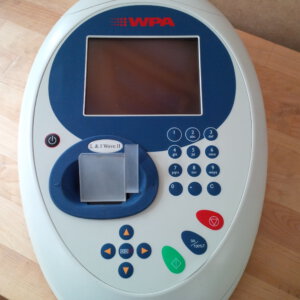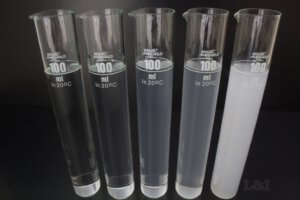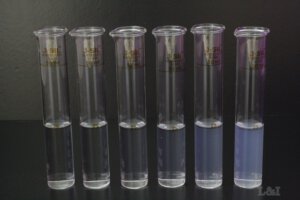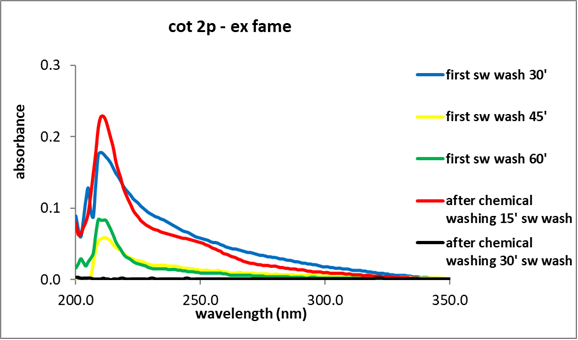At CP Metal Chemicals we strive for long-term relationships with our partners. We are not only searching for the right product in combination with the right cleaning procedure for each situation, but we also closely cooperate with our customers to investigate where we can optimize their cleaning process. One of the most important factors in optimizing any tank cleaning process is of course reducing cleaning time. In this blog we focus on measuring the efficiency of tank cleaning and tank cleaning chemicals, and we have invited L&I Maritime, an independent chemical consultancy, to give an explanation about the working of the spectrophotometer, the modern answer to monitoring tank cleaning procedures, which we firmly believe can help reduce your tank cleaning times significantly.
The alternative for wall wash inspection
In their work as cargo superintendents, L&I Maritime are often asked how the efficiency of cleaning chemicals in various tank cleaning situations can be measured and which brands are the most efficient for any given tank cleaning challenge. L&I Maritime’s answer to those questions is based upon using data generated from the L&I Wave II UV / Vis spectrophotometer, which is programmed to measure the purity of wall wash and washing water samples, to give the vessel the information they need to determine that the cargo tanks are clean from the previous cargo. Wall wash analysis has been used for many years in the chemical tanker business to determine how clean a particular cargo tank is prior to loading the next cargo, most commonly a high purity chemical product. But it is recognized that the wall wash inspection is limited, and the ability to measure the quality of washing water specifically for the presence of the previous cargo, during tank cleaning, provides todays’ officers with precise information that allows them to optimize their procedures, without having to take multiple wall wash samples.

Accurate measuring
The success of any tank cleaning operation is generally measured on how quickly and efficiently the wall wash standard is achieved. The so called “Tank Cleaning Guide Lines books” and the vessels own cleaning procedures are based on time and experience, however, there is no possibility to check whether the cleaning procedure can be stopped earlier in the process, since a manual check during washing isn’t possible. The spectrometer gives an exact reading of the progression in the cleaning process which enables the user to stop the cleaning procedure at the point where there is no further improvement.
The L&I Wave II is able to analyse wall wash samples for the following key tests most commonly used in wall wash analysis:

Colour in accordance with ASTM D1209

Permanganate Fade Time in accordance with ASTM D1363


Inorganic chlorides using silver nitrate solution
But the most common use of the L&I Wave II today, is the analysis of washing water samples, that allows all users to directly monitor tank cleaning “live” (without having to stop cleaning operations, cool down / gas free the cargo tanks and internally inspect them).
In many cases this analysis allows users to optimise these operations to a point where the pre-loading inspection requirements of the next cargo are achieved in less time, using less fuel and with less man entry into the cargo tanks.
The following graphs show illustrate what happens during tank cleaning from fatty acid methyl ester (FAME).
Example from practice
It should be noted that the vessel was requested to clean as follows:
I.) 2 hours seawater washing at 50ºC
II.) 1 hour chemical recirculation at 60ºC
III.) 2 hours seawater washing at 60ºC
IV.) 20 minutes freshwater washing at ambient temperature

After only one hour of seawater washing at 50ºC, the data clearly showed that there was no longer any significant improvement in the quality of the washing water samples, meaning that washing with seawater at 50ºC was no longer effective. Time saving 1 hour.
The cargo tank was then recirculated with 0,4% Grato 1 Marine in freshwater at 60ºC, before hot seawater washing / rinsing.

The red line on the graph represents the quality of the washing water sample 15 minutes into the hot seawater washing operation, after the chemical recirculation with Grato 1 Marine. It is apparent that the quality of this water sample has deteriorated from before the chemical recirculation, but this is actually proof that the cleaning chemical is effectively removing the last traces of the FAME. Indeed, the black line on the graph, which represents the quality of the washing water sample taken 30 minutes into the hot seawater rinsing, is a “flat-line” which indicates that the water is now completely free from previous cargo.
At this point, the cargo tank was washed with fresh water, gas freed, mopped, dried and inspected and successfully loaded. The total time saving for this tank was 2,5 hours from the documented tank cleaning procedure. Also, 2,5 hours less fuel was consumed and only one man entry was required.
Any tank cleaning procedure can be optimised using this method, but, clearly the right choice of cleaning chemical at the most effective working concentration and temperature is essential for any successful tank cleaning operation, both of which directly impact the voyage income for the owner / operator of the vessel. The high concentration of active components in the CP Metal Grato range ensures a more efficient cleaning procedure, where less product is required.
Technical support
At CP Metal Chemicals nothing is more important than to satisfy our customers. Servicing our relations at the highest level, is only possible when we fully understand their situation. Would you like to receive more information about the basic principles of tank cleaning, or would you like to discuss point of improvement in the cleaning process, we are more than happy to support!
You can contact us via below details:
W www.cp-metal.nl
T +31 10 2994999
E operations@cp-metal.nl

